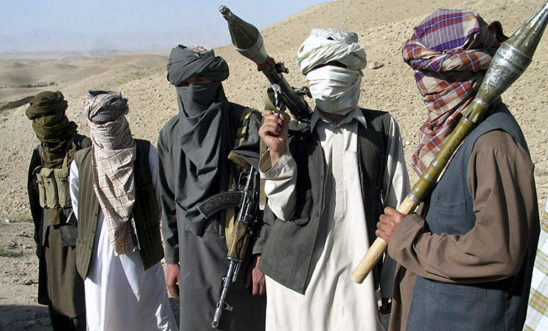Taliban Footprints Grow In Afghanistan As Offensive Intensifies
NEW DELHI: The Taliban are intensifying their nationwide offensive against the United States backed government in Kabul, with the latest attacks claiming over 24 lives in the capital city. The flare up in violence comes as the Taliban sees major gains, closing in on both Lashkar Gah -- the capital of the Helmand province, and Kunduz -- the northern city that was briefly captured by the militant group last year in their biggest military victory since the 2001 US invasion.
Afghan and NATO forces repeatedly insist that neither Lashkar Gah or Kunduz are at risk of falling to the Taliban, but reports from the ground differ as the Taliban closes in on both cities and controls large swathes of the surrounding territory.
In fact, as a glossed over report submitted to Congress by the Special Inspector General for Afghanistan Reconstruction noted earlier in the year, the Taliban now controls more territory in Afghanistan than at any time since US troops went in in 2001. In the first five months of 2016, the government lost control of nearly 5 percent of its territory to the Taliban since the beginning of the year. The area under Afghan government "control or influence" decreased to 65.6 percent by the end of May from 70.5 percent last year, based on data provided by US forces in Afghanistan.
Conservative estimates indicate that of 407 districts within the 34 provinces, 268 districts were under government control or influence, 36 districts (8.8%) within 15 provinces were under insurgent control or influence, and 104 districts (25.6 %) were “at risk.” Of the 36 districts under insurgent control or influence, nine districts with a population of 524,072 are under insurgent control and 27 districts with a population of 1.98 million are under insurgent influence.
The above are extremely conservative estimates, with the actual figures far more indicative of the Taliban’s growing presence in the war-torn country. Bill Roggio, the editor of The Long War Journal -- an online publication that is tracking Taliban control -- says that although confirmed figures estimate that one-fifth of the country is controlled or contested by the Taliban, in reality the percentage is quite higher -- more to the tune of the Taliban controlling or contesting half the entire country.
“Contested” areas refer to those where the government controls the district centre but the Taliban control large swathes of surrounding territory -- such as the case of Lashkar Gah in the Helmand province. “Control” implies that the Taliban have open control of a district.
Although the group was beaten back in 2001, they were able to regroup and began capturing territory between 2005 and 2009, with 2013 being a key year. The Taliban capitalised on the rollback of American troops, and in 2014, the capture of Kunduz came as a huge boost to the militant group as it signified their biggest victory since the American invasion.
And while Taliban presence in the rural areas has been steadily increasing, it is the attacks on the capital city of Kabul that will heighten security fears and compromise, in people’s eyes, the ability of the US-backed Afghan government to offer protection. Monday’s bombings follow a spate of attacks in Kabul, with 16 people killed when armed fighters stormed the American University of Afghanistan just over a week ago. It was the deadliest attack in Kabul since at least 80 people were killed by a suicide bomber who targeted a demonstration on July 23.





